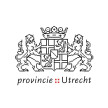My name is Wouter Schuddebeurs (www.Walletshaker.com) and I’m a freelance documentary photographer based in The Netherlands. In my personal work I search for the extreme and bizarre. This extraordinary element can occur in certain professions or hobbies but also in specific environments and remote places. After a period of intense research on new subjects I try to get involved and accepted within that group or environment. For example with the
My name is Wouter Schuddebeurs (www.Walletshaker.com) and I’m a freelance documentary photographer based in The Netherlands. In my personal work I search for the extreme and bizarre. This extraordinary element can occur in certain professions or hobbies but also in specific environments and remote places. After a period of intense research on new subjects I try to get involved and accepted within that group or environment. For example with the bodybuilders in my project ‘No PAIN no GAIN’ or joining the World War Re-enactors for the series in 2009. The final result can be a publication in printed media, but also more extended forms such as a book or multimedia production.
A new goal: Foula Island
Foula is part of the Shetland Islands of Scotland and one of Great Britain’s most remote permanently inhabited islands. Its surface measures 1265 hectare (12 km2) and houses around 24 inhabitants. Food and supplies come in by plane through a homemade airstrip. It has no stores or pubs. The island contains rocks, fields of grass, peat banks and five large hills of which one is 1.300 feet high which makes the island look quite spectacular.
My last projects where about the fact that some places where given a bad name or image through international media. This got me fascinated and by not just accepting this I started to investigate these places myself. My personal experience told me something else which I then translated in my photography. In 1937 Michael Powell made a film on Foula named ‘The edge of the world’ which has been a nickname for the island ever since. Newspaper The Guardian tells us ‘Living on the edge of the world’ is according to its inhabitants ‘free, honest, peaceful and simple’ but this makes me wonder why this place only inhabits 24 people? It also makes me curious why after 1937 not much has been visually documented on Foula island except by the tourists who come for bird watching.
The plan
I want to tell the different stories of the inhabitants on Foula because they seem to be living there for a reason. I want to play with the cliché that many people dream of this isolated existence and if it’s really a way of living a dream at all? To tell this story I want to make photographs that create the same atmosphere like the paintings of Pieter de Hooch who show us poetic and intimate Dutch households. Also the everyday activities like the work of Johannes Vermeer and the French painter Gustave Gourbet. Spontaneous portraits that reveal the strength and vulnerability of the inhabitants of Foula the way Jean Baptiste Chardin painted in the 18th century. Or more proud and posed like the Children of E.D. Boit made by the American painter John Singer Sargent in 1882. This project is the start of a much greater work. My plan is to finance my flights and stay for 18 days on Foula Island through crowdfunding. Including something extra I spent on the rewards.
Nieuwste donaties
Gerard van Breukele
16-03-2013 13:10Vriendenplicht!
Timo Slagmolen
15-03-2013 16:48Weer een ervaring rijker!! Veel plezier en succes, Timo
Jasper Boertjens
14-03-2013 12:29Wat een aparte plek. Veel succes daar!








